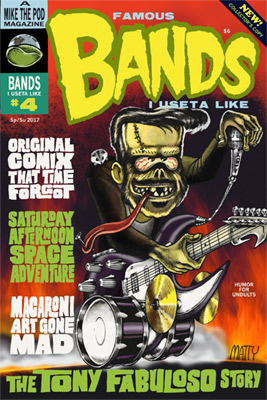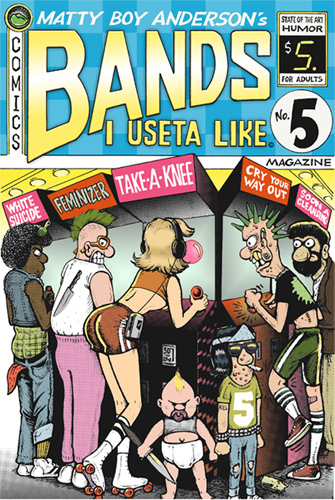I’ve admitted before that I am not fond of the medium of “music video”. I have observed it from its infancy; I lucked out and happened to be present when MTV started broadcasting in summer of 1981. If you enjoy being awkwardly sung to by a band, or like to be teased with sleazy, half-naked sluts, MTV was your White Knight, bubby.
Everyone wants to break into the movies, so it’s easy for a coked-up director to cajole an otherwise sensible group into painful, cringe-worthy antics. Then another director would react by crafting the most pretentious, arthouse video possible, all long takes and black-and-white aesthetics. “They’re like mini-movies,” say the line-toers, ignoring that music videos typically appropriate and condense everything meaningful about film. Some people will say anything to promote their clients.
But like Tijuana Bibles and Bumfight videos, there is still a vein of good under mountains of terrible. For every ten thousand glamor-shot videos of the latest solipsistic pop bimbo, there is one that reminds you why the medium exists in the first place. Maybe it’s not merely a quick-and-dirty promotional tool; it is like a “mini-movie”.
The appeal of the idea is easy to see, particularly in “viral” culture, where memes spread like fevers. Easily digestible media is prized in social networking, which makes decent music video even more precious a commodity. When one is truly Great, it deserves to be celebrated, as it is with Comics. The “throw-away” nature of the medium is overcome by the sheer ingenuity of the artist(s). Discovering art in a newspaper or music video will always pack more punch than discovering art on the walls of a museum.
Bhaṅgṛā is a form of pop music developed centuries ago, by the people of the Punjab region of India and Pakistan. It is invigoratingly uptempo, and Indian vocalists can typically hit like a zillion more notes than Americans can. Look folks, I try to research these articles, but when it comes to math or music theory involving numbers I am dumber than a smashed apple. What I’m trying to tell you is, when you go eat at the Indian restaurant, and you hear that singing, and think “that singer is going all over the damn place”, you’re actually hearing a shitload of notes in a short span of time. American ears aren’t trained to pick up on it; we’re all dirgy marches and rattlety-tat. I get excited when I hear my country’s anthem, for Pete’s sake.
Anyway; there’s a gentleman who introduced Bhaṅgṛā to America, and the world at large. The Internet knows him thanks to a video he did, very possibly the apogee of the format. In four minutes and sixteen seconds, he accomplishes everything necessary; if God made a music video, this is what it would look like. He was born Daler Singh, but he goes by the name Daler Mehndi.
The story goes that Mehndi’s critics claimed his music was popular due to the beautiful babes in his videos. He riposted by superimposing himself numerous times, in colorful robes representing the elements. Oh, and background effects that were hot stuff in 1998, the time of the hit’s debut.
I’ve only ever watched it on a small screen, so the special effects actually look pretty good. Years ago, it took me a moment to realize that I wasn’t looking at adult quadruplets. This was the first Indian video to use blue-screen technology, which I would call a towering success on all counts. Just watch it on your phone, like a subway commuter. Being high doesn’t hurt matters, either.
The distinctive “Tunak Tunak” dance is one of the best things about the video. I don’t know if it’s the turban and the fancy robe, or the synchronized dancing courtesy of the blue-screen, but Mehndi looks smoother than smooth. I would kill to be dressed like that. Are you kidding? That’s how you’ll know I’ve hit the big time, when I randomly dress like a Sikh in my living room.













You must be logged in to post a comment.